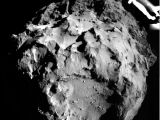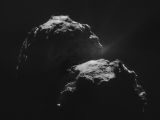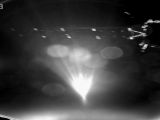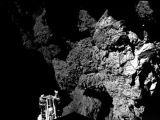Last week, on November 12, the European Space Agency's Philae lander broke free from the Rosetta spacecraft and embarked on a solo journey to Comet 67P/Churyumov-Gerasimenko. The lander took seven hours to reach its target and a couple more to settle down on its surface.
Thus, as revealed by the European Space Agency, Philae did not land on Comet 67P/Churymov-Gerasimenko once, but thrice. This is because, having reached the celestial body's surface, it bounced off it twice.
Data at hand indicates that Philae first made it on the comet at 15:33 GMT. It failed to properly attach itself to the comet's body, and consequently, it ended up drifting across its surface for a couple of hours. The second and the final landing occurred at 17:26 & 17:33 GMT, respectively.
Observing the lander with Rosetta's help
Just yesterday, the European Space Agency released a series of images documenting part of the lander's journey across the surface of Comet 67P/Churymov-Gerasimenko.
The images, included in the gallery below, cover a period of about 30 minutes. They show Philae both before it made its first landing and after the force of the impact sent it drifting across the surface of the celestial body.
“From left to right, the images show Philae descending towards and across the comet before touchdown,” the European Space Agency explains in a statement.
“The image taken after touchdown, at 15:43 GMT, confirms that the lander was moving east, as first suggested by the data returned by the CONSERT experiment, and at a speed of about 0.5 m/s [1.6 feet],” it adds.
These images were all obtained with the help of the Rosetta spacecraft's OSIRIS camera. At the time it obtained these images, the spacecraft was located at a distance of about 15.5 kilometers (9.6 miles) from the comet's surface.
Philae is hiding, scientists have no idea where it might be
Despite the fact that Philae landed on the surface of its target comet several days ago, researchers with European Space Agency are yet to determine its exact location.
Images that the lander sent back to Earth shortly after it reached its destination indicate that Philae is now located at the bottom of a cliff. Still, this one cliff that is keeping the probe company is yet to be identified.
Scientists expect that, by combining Rosetta and Philae data and images, they will soon manage to pin down the lander's resting place.
As explained by the Agency, “The imaging team is confident that combining the CONSERT ranging data with OSIRIS and navcam images from the orbiter and images from near the surface and on it from Philae’s ROLIS and CIVA cameras will soon reveal the lander’s whereabouts.”
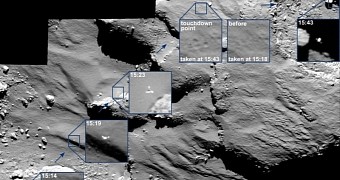
 14 DAY TRIAL //
14 DAY TRIAL // 
